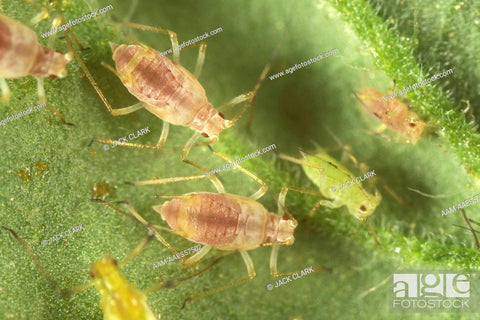
OH NO…… IS THAT AN APHID??


BUT WHAT DO APHIDS LOOK LIKE?
Aphids, aka Plant Lice, Blackflies or Greenflies, are actually kind of cute for a plant-slaughtering bug. They have a pear-like appearance and come in various colors, so when determining if the bug on your plant is an aphid or not - don’t rule it out because of its color. There are black aphids, yellow aphids, white aphids, green aphids, pink aphids and even wooly aphids!






The wooly aphid and mealy bugs look very similar, but mealy bugs are more scaly looking than aphids and move much much slower.
You can also tell 2 determining characteristics from these pictures, one - they have 2 antennae protruding from their head, and two - they have 2 tube-like structures extending from their back, near their hind legs. Sometimes you can see bubbles coming out of them…thats their precious loot!
-----------------------------------------
THIEVES!
Aphids are attracted to your plants because of their rich, delicious sap. If you have ever broken off a leaf of one of your plants (especially a ficus, their white sap is very prominent) you know what this sap looks like as it oozes out of the open wound. THAT is the good stuff that the aphids want to steal. This is the plants food - its lifeline - and they will suck it out of the plant until it dies. Which won’t take very long considering how fast aphids multiply.
-----------------------------------------
BORN PREGNANT, READY TO MULTIPLY
The number one reason you want to act fast is because aphids multiply RAPIDLY. And by rapidly I mean 1 on tuesday and hundreds on sunday. This is possible because the adult females give birth to more female nymphs which - get this - ARE PREGNANT ALREADY. This increasing colony of females will quickly wipe out a small plant and do severe damage to a bigger plant.
Girl power amiright? And onto the even worse news…
When the fall comes the adult females will sprout wings, being able to colonize all of your plants, so if you spot bugs on any of your plants be sure to act as quickly and efficiently as possible! This also means it's time for, yup you guessed it, PLANT QUARANTINE! Get it away from all other plants ASAP before you have a huge problem on your hands!!
-----------------------------------------
GIVE ME A SIGN
Now that you know what aphids are, here are the signs that they might be living underneath your nose.
1. Leaves/stems covered in a sticky substance
2. Black fungal growth, ‘sooty mold’
3. Deformed flowers/fruit
4. Yellow, stunted or curling leaves
2. Black fungal growth, ‘sooty mold’
3. Deformed flowers/fruit
4. Yellow, stunted or curling leaves
-----------------------------------------
HOW TO GET RID OF APHIDS
Alright, now that you’ve had enough of these suckers (badum tss) haha bug jokes. But seriously, it's time to

You can do this in a few different ways, some being natural, but maybe not as effective, and some being with chemicals.
The first option is to give it a good hosing down with either just water or soapy water, but be sure not to harm your plant in the process! It is best to take your plant outside (only if the weather permits you to do so) to hose it down so you don’t have the chance of any aphids hitchhiking their way back to your plants in your house.
The next option is to make a homemade aphid spray by mixing water and rubbing alcohol (a 3:1 ratio, more water than alcohol) and do the same as the first, by spraying down the plant! If you don’t feel comfortable spraying the plant, you can spray a paper towel or light rag and wipe the plant down. It is always good practice to wipe the plant down after showering it anyway!
Another option is a natural spray called neem oil. This is an insecticide for indoor plants and can be used as a preventative spray as well as a solution, not only for aphids but other pests too! Simply spray down the plant and wipe thoroughly, looking in every nook and cranny, and flipping over every leaf. This can be a tedious process, but it will be well worth it to save your plant from its inevitable death.
A more unnatural option is to go with ultra-refined oil sprays that essentially suffocate the aphids. While generally safe for plants, some plants could be sensitive to the sprays, so they aren’t 100% recommended, but if worse comes to worst, you can use them.
Lastly, a funny option I thought about after typing this is to introduce lady bugs to the plant since they like to eat aphids. I guess it would depend on how bad the infestation is, and how many ladybugs you could get, but if you caged the ladybugs on the plant, it may work! This is a natural method that gardeners use outside on their plants as well!
-----------------------------------------
If you enjoyed this article and want to know more about plants, or read more specific articles, such as Immortal Snake Plants 101 or Indoor Plant Care 101, click here!
If you have any questions, book a meeting with our plant expert here!
Questions or comments? Leave them down below!
